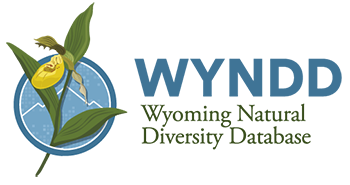Program Highlights
- Developed and deployed database components to manage structured survey/sampling data, and incorporated available information into the Data Explorer application (2023)
- Launched Data Explorer application (2023)
- Synchronized vascular plant taxonomy with the Rocky Mountain Herbarium (RM), and made RM specimen data available via our Data Explorer (2023)
- Surpassed 5 million observation records in our database (2023)
- Added Nonvascular Plants to our database and web applications (2023)
- Added Bryophyte and Lichen species to our web applications (2022)
- Surpassed 4 million observation records in our database (2021)
- Improved backup and security processes across our stack (2021)
- Improved tracking of usage stats and data requests for better reporting (2021)
- Made numerous enhancements to data input applications used by our partners (2021)
- Integrated invasive species information into our database and web apps (2021)
- Augmented automation and reporting within our database (2021)
- Redesigned WYNDD homepage for easier navigation and modernized look (2020)
- Launched searchable Reports Page application (2020)
- Added nearly 1.7 million eBird records into our database and web applications (2020)
- Added complete lichen flora to database and Species List application (2020)
- Launched Species List application (2019; this application has now been replaced by the newer Data Explorer application)
- Improved automated quality control procedures in central database (2019)
- Launched Wyoming Field Guide (2018)
- Launched Data Explorer application (2017; this legacy application has now been replaced by the newer Data Explorer application)
- Completed transition to new database platform (2016)
Expertise
- Database Development and Administration
- Front-End (Web Application) Development
- APIs
- Taxonomic Standards and Best Practices
- Geographical Information Systems (GIS)
2024 Program Focus
- Develop internal tools that allow our biogists to efficiently review and maintain observation records, range maps and other data in our central database
- Add nonvascular plant flora to our database and Data Explorer application
- Improve automation and testing throughout our system for better performance and reliability
- Continue adding structured survey datasets to our database
- Continue to identify priority datasets and add them our central database and web apps
- Expand coverage of data for invasive species in our database and web applications
- Facilitate adoption of a statewide standard for raptor nest surveys
- Continue refining all of our data access applications, and conduct trainings and Q&A sessions on these applications with our partners


